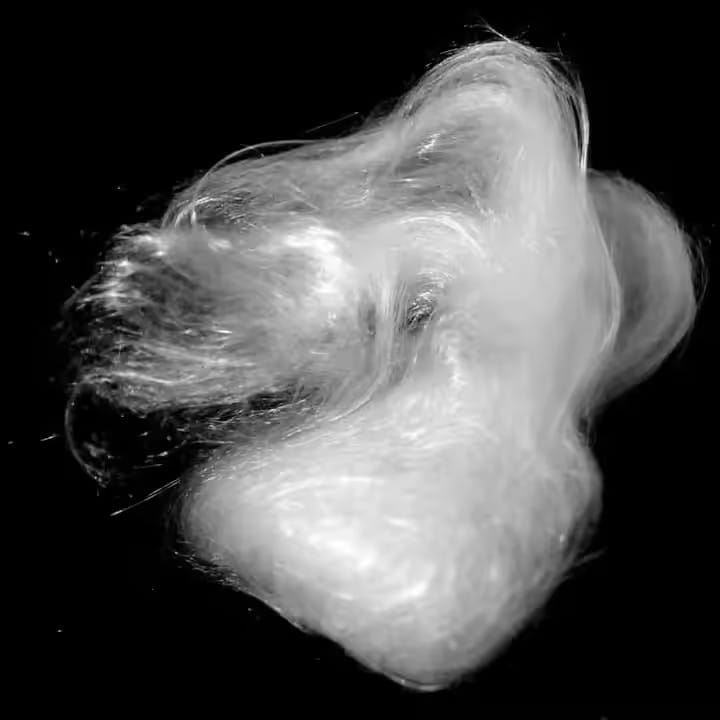As a materials scientist who’s spent years elbow-deep in furnace designs and semiconductor tools, I can tell you that most engineers underestimate quartz wool—until their process goes sideways. At Hongwo, we’ve turned this “boring” material into a thermal barrier that outperforms ceramics and metals in extreme conditions. Here’s why it matters.
What Exactly is Quartz Wool?
Picture fiberglass, but made from ultra-pure silica fibers that can handle 1,200°C without breaking a sweat. Unlike bulk quartz components, wool’s tangled fibers:
Trap still air (nature’s best insulator) in microscopic pockets
Flex to absorb thermal expansion stresses
Resist chemical attack from acids and alkalis
Fun fact: A 10cm-thick Hongwo quartz wool layer reduces heat transfer better than 30cm of conventional ceramic fiber—we tested this at our Suzhou blast furnace lab.
Three Ways Quartz Wool Saves Your Process
1. Thermal Shock Resistance That Defies Physics
Standard ceramic insulation cracks when cycled between 25°C and 800°C
Hongwo’s wool survives 500+ rapid cycles (verified in CVD tool lids at SMIC)
Secret? Our fibers are drawn with controlled micro-crystallinity to prevent embrittlement
- Chemical Purity You Can Taste (But Shouldn’t)
Competitor wool contains 200+ ppm alkali metals (contaminates semiconductor processes)
Hongwo’s is <5ppm—clean enough for silicon crystal growth furnaces
How? We acid-wash fibers in HCl vapor, not liquid baths
- Particle Control That Actually Works
Cheap wool sheds fibers that clog gas lines (ask that MEMS fab in Shenzhen about their $80k downtime)
Our binder-free manufacturing eliminates 99% of loose particles (SEMI E129 compliant)
 A Day in the Life of Our Quartz Wool
A Day in the Life of Our Quartz Wool
7:30 AM – Installed as liner in a diffusion furnace at 1,100°C
2:15 PM – Survives HF vapor cleaning that dissolved the chamber’s aluminum brackets
9:00 PM – Still insulating after 14 thermal cycles while ceramic alternatives failed at cycle 8
How to Spot Inferior Wool (Before It Fails)
At Hongwo’s QC lab, we’ve identified these red flags:
��� White spots = devitrification starting points (ours stays glass-clear at 1,000°C)
��� Dusty texture = poor fiber bonding (our wool feels like dense cotton)
��� Metallic smell = residual contamination (Hongwo’s is odorless)
When “Savings” Cost More
That solar cell manufacturer who switched to discount wool last year?
Saved $12/m² on insulation
Lost $420k in scrap wafers from sodium contamination
Now uses Hongwo exclusively (their yield jumped 11%)
Why Smart Engineers Demand These Tests
Before accepting any quartz wool shipment:
✅ FTIR analysis – Checks for hydroxyl groups (ours: <50ppm)
✅ Hot-stage microscopy – Reveals shrinkage at temperature (Hongwo’s: <2% at 1,100°C)
✅ ICP-MS report – Proves metallic purity (we include this with every batch)
Final Thought:
Quartz wool isn’t just insulation—it’s your first line of defense against thermal chaos. At Hongwo, we engineer it to outlast your equipment because we know your entire process depends on stable temperatures.
Lab story: Our R&D team once tested competitor wool against ours in a 1,400°C furnace—theirs turned to brittle crumbs in 3 hours while ours survived a 72-hour torture test. Ask to see the video when you visit.
 Hongwo Quartz Products
Hongwo Quartz Products

 A Day in the Life of Our Quartz Wool
A Day in the Life of Our Quartz Wool
Scan the QR Code to start a WhatsApp chat with us.